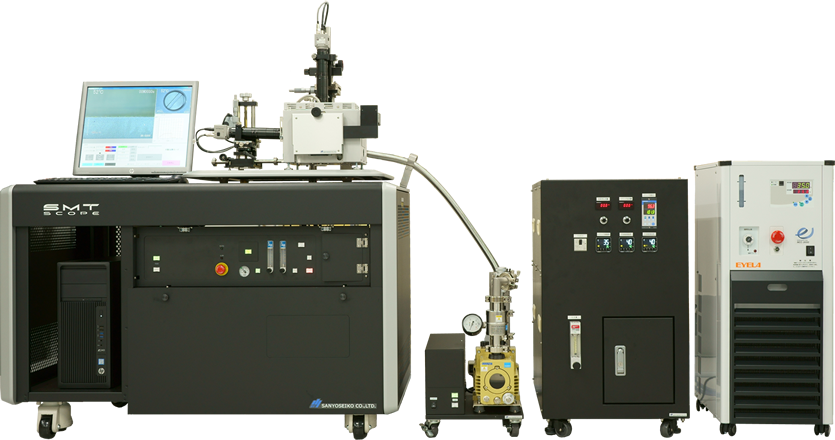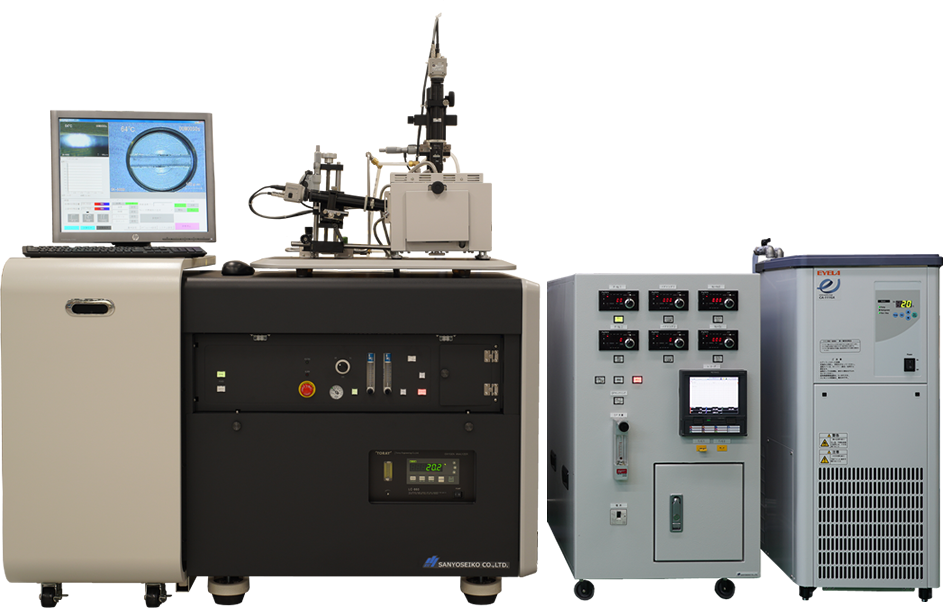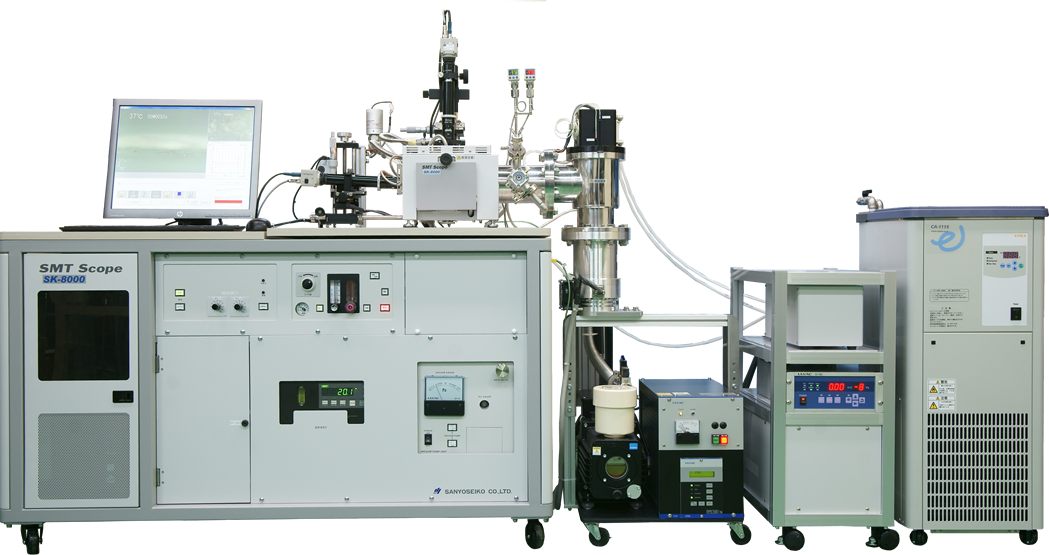Various heating atmospheres
With the recent high performance of power semiconductors, the development of new bonding materials and fluxless voidless bonding are gathering attention. It is highly recommended to be utilized for process development under high temperature atmosphere based on the needs of the customers.
Heating specifications under a formic acid atmosphere
“In-situ observation” of formic acid reflow can be realized.

“In-situ observation” can be performed to change the state of the sample under formic acid reduction atmosphere, such as micro bump bonding and power semiconductors with narrow pitches. It can be controlled from heating to cooling automatically, and the formic acid concentration induced by N2 bubbling can be arbitrarily set between 1% and 5%. The voidless implementation can be realized by deaeration while heating, and the timing of deaeration can be set.
* Please contact us for details.
Heating specifications of dew point and oxygen concentration adjustment
“In-situ observation” can be realized under low dew point conditions.

Development and evaluation of fluxless brazing can be performed. Fluxless brazing is gathering attention instead of conventional nocorock brazing from the view of environmental protection, cost reduction and reduction of residues in the case of the brazing of the aluminum alloys being used for heat exchangers. In-situ brazing observation is possible with a flexible temperature profile that adjusts the dew point ranging from -70℃ to -10℃ and the oxygen concentration ranging from 1 ppm or less to 100 ppm.
* Please contact us for details.
Heating specifications of high vacuum
“In-situ observation” in high vacuum can be realized.

“In-situ observation” of state change of the sample, such as brazing materials, can be performed by heating up to 800℃ in a high vacuum atmosphere.
Ultimate vacuum degree: 5 × 10-4 Pa
* Please contact us for details.
Heating specifications of hydrogen atmosphere
“In-situ observation” of hydrogen reflow can be realized.
“In-situ observation” of soldering behavior in a reducing atmosphere can be performed, such as implementation of the power element on the radiation plate. The heating of forming gas atmosphere with 50% of hydrogen and 50% of nitrogen is possible. Not only the generation of forming gas atmosphere, but also the entire process from heating to cooling can be automatically controlled. The void free implementation can be realized by deaeration while heating, and the timing of deaeration can be set.
* Please contact us for details.
